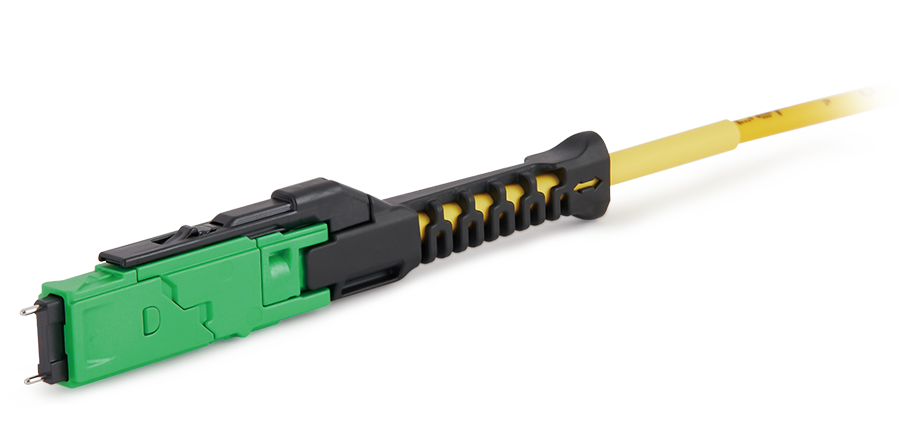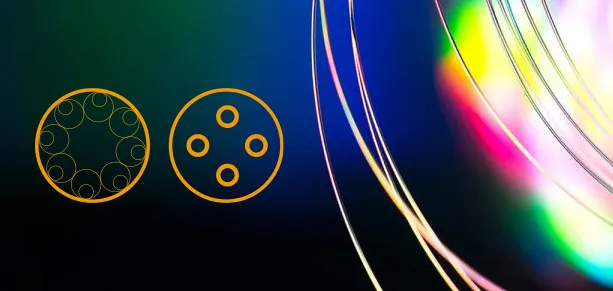Ⅰ. The role of WDM wavelength division multiplexing
WDM (Wavelength Division Multiplexing) wavelength division multiplexing system mainly provides an easy-to-implement solution for long-distance transmission of high-speed and large-capacity information, which is convenient for the transmission expansion of communication networks.
The traditional optical transmission method is that an optical fiber can only transmit signals of one wavelength at a time, while WDM realizes the transmission of two or more optical wavelength signals on a single optical fiber.
WDM mainly realizes wavelength multiplexing and demultiplexing through multiplexers and demultiplexers. At the transmitting end, multiple wavelength signals are multiplexed together through the multiplexer, and then coupled to the same fiber for transmission; at the receiving end At the end, the optical signals of different wavelengths are separated by a demultiplexer to restore the original signal. The wavelength division multiplexer has the functions of multiplexing and demultiplexing at the same time. In long-distance transmission, in order to enhance the optical signal in the transmission process, an optical amplifier can also be used in the middle to avoid the weakening of the optical signal transmission.
The characteristic indicators of WDM include insertion loss, return loss, polarization loss, channel isolation, operating temperature, etc., and the two most important characteristic indicators are insertion loss and isolation. Insertion loss refers to the attenuation caused by the insertion of the WDM filter into the optical transmission system. The lower the insertion loss, the better. Isolation refers to the degree of interference of one channel signal to another channel, and the higher the isolation, the better.
Ⅱ. The characteristics of WDM wavelength division multiplexing:
1. Double the transmission capacity. The characteristics of WDM make it possible to make full use of the bandwidth resources of the optical fiber, so that the transmission capacity of one optical fiber is many times higher than that of a single wavelength. With a channel rate of 10Gbit/s or 2.5Gbit/s, the number of WDM channels can reach more than 32, ensuring that the transmission capacity can reach 300~400Gbit/s.
2. Good compatibility. WDM has good compatibility with different signals. When transmitting signals of different natures such as image, data and voice, each wavelength is independent of each other and does not interfere with each other, ensuring the transparency of transmission.
Quality control at T&S Communications involves maintaining standards on the production line and in various other processes. We perform quality control of methods, equipment, processes and products, and always spot-check products or procedures for daily inspections to ensure standards are maintained. Welcome to consult.

 Fiber Optic Flex Circuit (FOFC)
Advanced Simulation & Optimization, High Positioning Accuracy, Flexible Customization, Rigorous Reliability Testing
Fiber Optic Flex Circuit (FOFC)
Advanced Simulation & Optimization, High Positioning Accuracy, Flexible Customization, Rigorous Reliability Testing MDC Solution
US Conec's MDC connector is a Very Small Form Factor (VSFF) duplex optical connector, expertly designed for terminating single-mode and multimode fiber cables with diameters up to 2.0mm.
MDC Solution
US Conec's MDC connector is a Very Small Form Factor (VSFF) duplex optical connector, expertly designed for terminating single-mode and multimode fiber cables with diameters up to 2.0mm. MMC Solution
US Conec's Very Small Form Factor (VSFF) multi-fiber optical connector that redefines high-density connectivity with its cutting-edge TMT ferrule technology and intuitive Direct-Conec™ push-pull boot design.
MMC Solution
US Conec's Very Small Form Factor (VSFF) multi-fiber optical connector that redefines high-density connectivity with its cutting-edge TMT ferrule technology and intuitive Direct-Conec™ push-pull boot design. EN
EN
 jp
jp  fr
fr  es
es  it
it  ru
ru  pt
pt  ar
ar  el
el  nl
nl 



_and_High-Reflection_(HR)_Optical_Coatings.webp)
